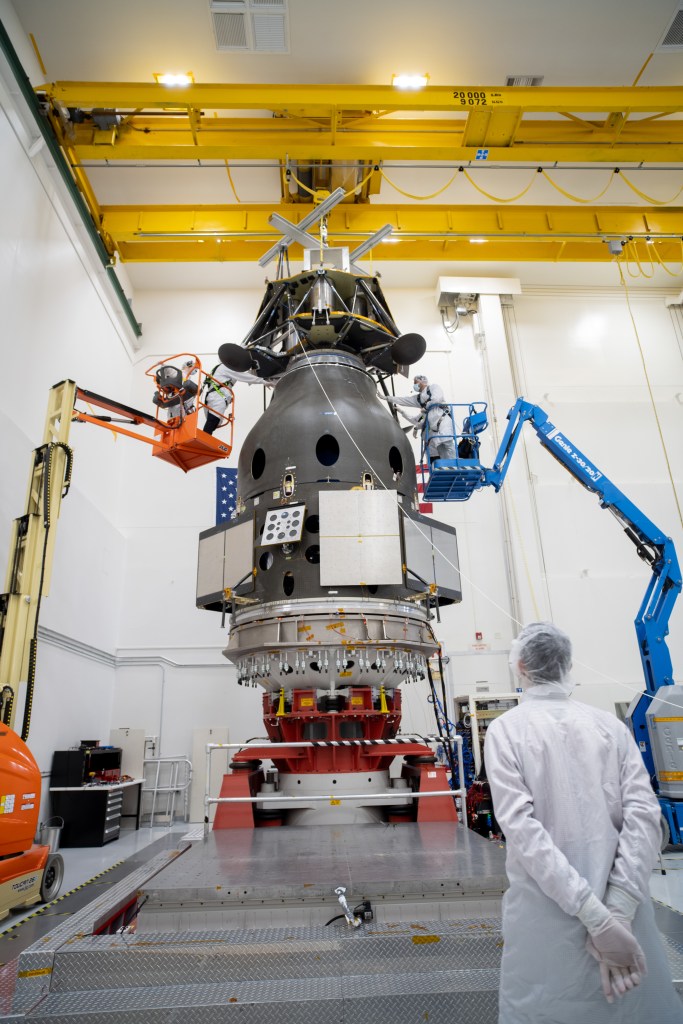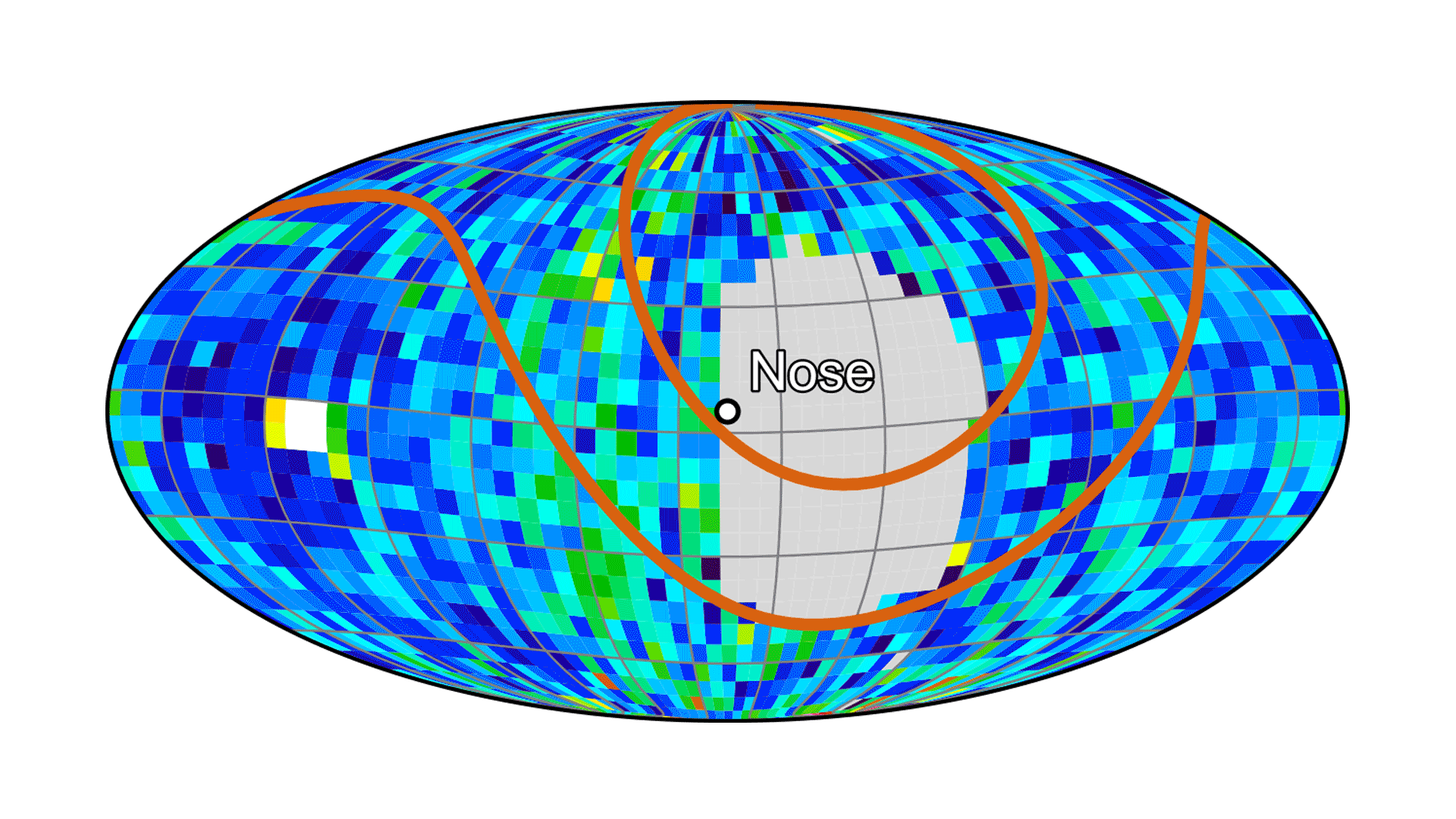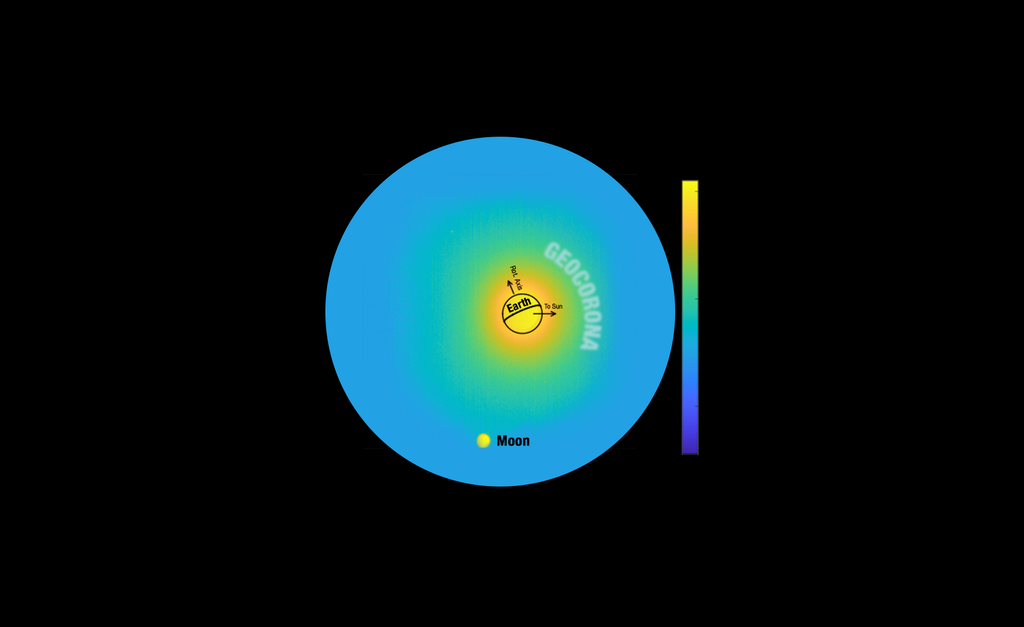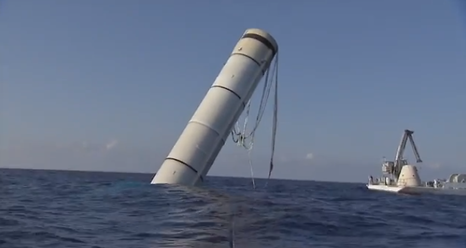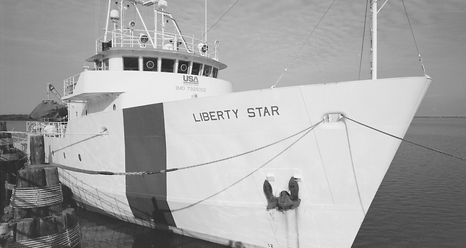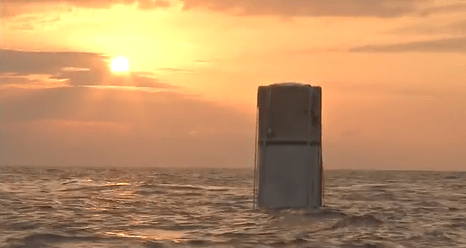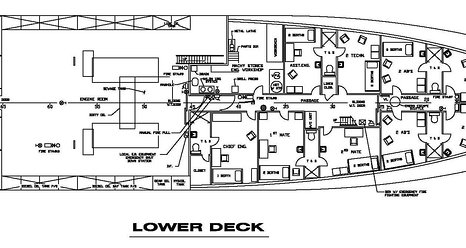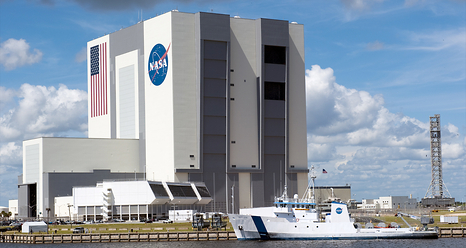SRB Retrieval Ships Recordation
Retrieval Overview
Retrieval Overview
Each ship retrieves one booster. Upon arrival, the team first conducts a visual assessment of the flight hardware. The main parachutes are the first items to be brought on board. Their shroud lines are wound onto each of three of the four reels on the ship’s deck. The drogue parachute, attached to the frustum, is reeled onto the fourth reel until the frustum is approximately 50 feet astern of the ship. The 5,000-pound (2,268-kilogram) frustum is then lifted from the water using the ship’s power block and deck crane.
With the chutes and frustum recovered, attention turns to the SRB. The dive team prepares for booster recovery. Two small inflatable boats, with eight retrieval divers aboard, are deployed. The job of the first dive team is to install a Diver-Operated Plug (DOP) in the nozzle of the booster. The DOP is launched from the ship and towed to the booster by one of the small boats. An air hose is then deployed from the ship. Once dive preparations are complete, the dive team enters the water for DOP insertion. The DOP is 22 feet (6.7 meters) in length and weighs 1,100 pounds (498 kilograms). It is neutrally buoyant in water, meaning it neither floats nor sinks, and is easily guided to the aft skirt at a depth of about 110 feet (33.5 meters) by the divers. A quick inspection of the nozzle is conducted. The DOP is then inserted into the booster nozzle. Once the DOP legs are locked in place and the nozzle sealed, an air hose is attached.
The second team double-checks the aft skirt and DOP installation to ensure there are no problems. After the second dive is completed, dewatering operations begin. Air is pumped from the ship through the DOP and into the booster, displacing water within the casing. As the process continues, the booster rises in the water until it becomes top-heavy. It falls horizontally, like a log in the water. Air pumping continues until all water is expelled from the empty casing.
The final step in the ocean retrieval procedure is to connect the ship’s tow line. Once the tow connection is made, the divers return to the ship and the trip to NASA’s Hangar AF on Cape Canaveral Air Station begins.
The ships enter Port Canaveral, where the booster is changed from the stern tow position to a position alongside the ship, the hip tow position, to allow greater control. The ships then pass through a drawbridge, Canaveral Locks, and transit the Banana River to Hangar AF. They are lifted from the water with Straddle-Lift cranes and placed on rail cars to begin the disassembly and refurbishment process.
Launch-to-Landing Process
A timeline capturing the launch-to-landing process of the Shuttle.

Historical Narrative
Historical Narrative captures anecdotes and specifications of the Solid Rocket Boosters Retrieval Ships.

SRB Retrieval Ships Videos
Videos of the SRB Retrieval Ships in action as they obtained and transport the Solid Rocket Boosters.

Shuttle Recordation Website
The Shuttle Historical Recordation website is a compilation of photos, videos and more of the historic Space Shuttle.

SCA Recordation Website
The SCA Recordation website is a compilation of photos, videos and more of the historic Shuttle Carrier Aircraft.












